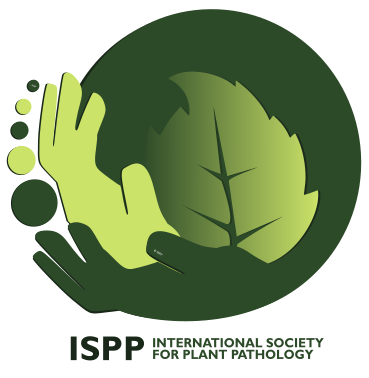FACTSHEET
Control of Cassava Diseases
Introduction
Majority of farmers and
a large number of people in Ghana believe
cassava is a very hardy
crop that requires little attention when cultivated. A large number of people
also think that when you throw cassava cuttings on to any soil in
Ghana you
will harvest some roots even if no attention is given to the plants. Cassava
like any other food crop requires attention if optimum (maximum) yields are to
be obtained from a unit area. Cassava is affected by a number of diseases that
prevent farmers from getting optimum yields of roots from their farms. Some of
the diseases are so devastating
(destructive) that they can give no yield of storage roots if not
controlled.
What are the
causes of diseases in cassava?
Cassava diseases
are caused by very tiny living things that are so small in size that they can
not be seen with the naked eyes. Living things that are very tiny and can not be
seen with the naked eyes are said to be microscopic. These microscopic living
things causing diseases are called pathogens. Pathogens that cause diseases in
cassava may be viruses, bacteria or fungi.
The major
diseases of cassava are:
·
African Cassava Mosaic Disease (ACMD) (caused by a virus)
·
Cassava Bacterial Blight (CBB) (caused by
bacteria)
·
Cassava Anthracnose Disease (CAD) (caused
by a fungus)
Signs or Symptoms
of Diseases
Pathogens or
living things that cause diseases in cassava produce certain signs or symptoms
in the plants they attack or infect. Cassava plants that show these signs or
symptoms listed below may be suffering from one or more diseases. In weaker
varieties of cassava the symptoms or signs may be severe indicating that the
plant is not healthy.
- Discoloured leaves with patches of green, yellow and white or
mixtures of these colours (a
symptom of ACMD)
- Stunted growth (a symptom of ACMD)
- Small distorted leaves (a symptom of ACMD)
- Dark water soaked patches and large brown patches or blights on
leaves (symptoms of CBB)
- Presence of yellow or brown gums on petioles, leaf blades or stems
(a symptom of CBB)
- Several wilted (dry) leaves even in the wet season (a symptom of
CBB or a root rot disease)
- Severe defoliation (leaf drop) even in the wet season (a symptom of
CBB or a root rot disease)
- Shoot or stem dieback (a symptom of CBB or CAD)
What are the
Importance of Cassava Diseases?
- Diseases cause low yields of storage roots
- Diseases reduce the earnings of farmers as they prevent optimum
yields from being obtained.
- Poor yield due to diseases affect food security (poor yield will
leave little or nothing for storage)
- Some cassava diseases are devastating and can bring about total
crop failure.
- Total crop failure brings about frustration and hardships to
farmers
- Very low crop yield resulting from epidemics (several disease
outbreaks) of certain diseases such as CBB may bring about starvation or
hunger.
- Cassava diseases that affect stems (those that produce cankers and
dieback) can lead to loss and shortages of planting materials
- Loss of leaves through diseases can affect the availability of
leafy vegetables.
- Loss of leaves and poor yield of storage roots can affect animal
production (cassava leaves and storage roots are used in feeding goats and
sheep and are also used in food preparations for pigs and poultry)
Controlling
Diseases
Use of healthy
planting material
Each cassava
disease may have certain specific methods that will make control of that disease
very effective. However, there are certain methods of disease control that are
effective in all cases. The first important step to effective disease control is
starting your farm with healthy planting materials. This means that stems
providing cuttings for planting must come from healthy plants. Healthy plants do
not contain the viruses, the bacteria or fungi that cause diseases. Stem
cuttings from healthy plants sprouts (germinate) better and in most cases plants
derived or obtained from healthy cuttings grow vigorously. Often these plants
start developing their storage roots before new infections or diseases set in.
Late infections (infections that set in 7 months after planting) often has
little or no effect on crop yield. It is therefore, very important to start your
cassava farm with healthy planting material.
Selection of healthy
plants for production of cuttings
Avoid
plants:
- with several discoloured leaves with patches of green, yellow and
white or mixtures of these colours.
- with small distorted leaves.
- that are stunted or are growing poorly.
- with wilted leaves in the wet season.
- that have shed their leaves in the wet season.
- with dark water soaked patches on their leaves
- with leaf blights and yellow or brown gum discharges on leaves,
petioles and stems
- with cankers or ‘sores’ on the stems.
- with shoot or stem dieback.
Other useful
methods of controlling diseases of cassava
- Select appropriate varieties that are disease resistant (varieties
that can not be attacked by diseases)(get information on these varieties from
your Agriculture Extension Officer)
- Avoid soils that are poor in nutrients or make efforts to improve
soil fertility with cheap affordable fertilizers or use organic manure such as
poultry droppings. Soils that are fertile will support a healthy crop of
plants that can stand up better against diseases.
- In varieties that branch, use cuttings from the branches as
planting materials as these branches are often free from viruses. This
practice can help reduce the spread of ACMD.
- In cassava varieties that do not branch avoid the basal portion of
the stem because cuttings obtained from this zone are rich sources of viruses.
This practice can help reduce the spread of ACMD if varieties available for
planting are not resistant to the disease.
- Dip stem cuttings with cankers or ‘sores’ in dilute solutions of
suitable fungicides before planting if that is the only source of planting
material available. Get advise from your Agriculture Extension Officer on the
selection and safe use of fungicides.
- Avoid using the top green parts of stems as planting material (this portion of the stem dehydrates
quickly and is easily attacked by agents of diseases.
- Early planting of cassava at the beginning of the rains is better
than late planting (early planting produce vigorous growing plants that can
withstand diseases better in the dry season).
- It is good to destroy plant debris with diebacks and fungal growths
and other diseases through controlled burning particularly after
harvest.
This factsheet was
developed and prepared by E. Moses as a literature for transferring simple
disease control methods to literate cassava farmers.
Address of author: Crops Research Institute,
P.O. Box
3785, Kumasi,
Ghana
e-mail: criggdp@gh.com
|



